Nickel-acetic acid (1:1)
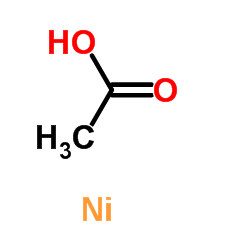
Nickel-acetic acid (1:1) structure
|
Common Name | Nickel-acetic acid (1:1) | ||
|---|---|---|---|---|
| CAS Number | 373-02-4 | Molecular Weight | 118.745 | |
| Density | 9.50 lb/gal | Boiling Point | 117.1ºC at 760 mmHg | |
| Molecular Formula | C2H4NiO2 | Melting Point | 1555°C | |
| MSDS | N/A | Flash Point | 40ºC | |
| Name | Nickelous acetate |
|---|---|
| Synonym | More Synonyms |
| Density | 9.50 lb/gal |
|---|---|
| Boiling Point | 117.1ºC at 760 mmHg |
| Melting Point | 1555°C |
| Molecular Formula | C2H4NiO2 |
| Molecular Weight | 118.745 |
| Flash Point | 40ºC |
| Exact Mass | 117.956474 |
| PSA | 37.30000 |
| LogP | 0.09090 |
| InChIKey | AIYYMMQIMJOTBM-UHFFFAOYSA-L |
| SMILES | CC(=O)[O-].CC(=O)[O-].[Ni+2] |
Synonym:Acetic acid, Nickel (II) salt; Nickelous acetat Section 2 - COMPOSITION, INFORMATION ON INGREDIENTS
Risk Phrases: 20/22 Section 3 - HAZARDS IDENTIFICATION EMERGENCY OVERVIEW
Harmful by inhalation and if swallowed.Carcinogen. Potential Health Effects Eye: May cause eye irritation. Skin: May cause skin irritation. Ingestion: Harmful if swallowed. May cause gastrointestinal irritation with nausea, vomiting and diarrhea. Inhalation: May cause respiratory tract irritation. Chronic: May cause cancer according to animal studies. May cause reproductive and fetal effects. Section 4 - FIRST AID MEASURES Eyes: Immediately flush eyes with plenty of water for at least 15 minutes, occasionally lifting the upper and lower lids. Get medical aid immediately. Skin: Immediately flush skin with plenty of soap and water for at least 15 minutes while removing contaminated clothing and shoes. Get medical aid if irritation develops or persists. Ingestion: If victim is conscious and alert, give 2-4 cupfuls of milk or water. Get medical aid immediately. Inhalation: Get medical aid immediately. Remove from exposure to fresh air immediately. If not breathing, give artificial respiration. If breathing is difficult, give oxygen. Notes to Physician: Treat symptomatically and supportively. Section 5 - FIRE FIGHTING MEASURES General Information: As in any fire, wear a self-contained breathing apparatus in pressure-demand, MSHA/NIOSH (approved or equivalent), and full protective gear. During a fire, irritating and highly toxic gases may be generated by thermal decomposition or combustion. Extinguishing Media: Use extinguishing media most appropriate for the surrounding fire. Autoignition Temperature: Not available. Flash Point: Not available. NFPA Rating: Not published. Explosion Limits, Lower: Not available. Upper: Not available. Section 6 - ACCIDENTAL RELEASE MEASURES General Information: Use proper personal protective equipment as indicated in Section 8. Spills/Leaks: Wash area with soap and water. Clean up spills immediately, observing precautions in the Protective Equipment section. Sweep up, then place into a suitable container for disposal. Avoid generating dusty conditions. Provide ventilation. Section 7 - HANDLING and STORAGE Handling: Wash thoroughly after handling. Avoid contact with eyes, skin, and clothing. Avoid ingestion and inhalation. Use with adequate ventilation. Storage: Store in a cool, dry place. Section 8 - EXPOSURE CONTROLS, PERSONAL PROTECTION Engineering Controls: Use adequate general or local exhaust ventilation to keep airborne concentrations below the permissible exposure limits. Personal Protective Equipment Eyes: Wear appropriate protective eyeglasses or chemical safety goggles as described by OSHA's eye and face protection regulations in 29 CFR 1910.133. Skin: Wear appropriate gloves to prevent skin exposure. Clothing: Wear appropriate protective clothing to prevent skin exposure. Respirators: Follow the OSHA respirator regulations found in 29CFR 1910.134. Always use a NIOSH-approved respirator when necessary. Section 9 - PHYSICAL AND CHEMICAL PROPERTIES Physical State: Solid Appearance: green Odor: None reported pH: Not available. Vapor Pressure: Not available. Vapor Density: Not available. Evaporation Rate: Not available. Viscosity: Not available. Boiling Point: Not available. Freezing/Melting Point: Not available. Decomposition Temperature: Not available. Solubility: Soluble in water. Specific Gravity/Density: 1.798 Molecular Formula: C4H6O4Ni Molecular Weight: 176.7296 Section 10 - STABILITY AND REACTIVITY Chemical Stability: Stable under normal temperatures and pressures. Conditions to Avoid: None reported. Incompatibilities with Other Materials: None reported. Hazardous Decomposition Products: Irritating and toxic fumes and gases. Hazardous Polymerization: Has not been reported. Section 11 - TOXICOLOGICAL INFORMATION RTECS#: CAS# 373-02-4: QR6125000 LD50/LC50: CAS# 373-02-4: Oral, mouse: LD50 = 410 mg/kg; Oral, rat: LD50 = 350 mg/kg. Carcinogenicity: Nickel(ii) acetate - NTP: Suspect carcinogen OSHA: Possible Select carcinogen See actual entry in RTECS for complete information. Section 12 - ECOLOGICAL INFORMATION For further information, contact Fisher Scientific. Section 13 - DISPOSAL CONSIDERATIONS Dispose of in a manner consistent with federal, state, and local regulations. Section 14 - TRANSPORT INFORMATION CDG/CPL IMO No information available. IATA No information available. RID/ADR No information available. Canadian TDG No information available. Section 15 - REGULATORY INFORMATION European/International Regulations European Labeling in Accordance with EC Directives Hazard Symbols: XN Risk Phrases: R 20/22 Harmful by inhalation and if swallowed. Safety Phrases: S 24/25 Avoid contact with skin and eyes. WGK (Water Danger/Protection) CAS# 373-02-4: Canada CAS# 373-02-4 is listed on Canada's DSL/NDSL List. WHMIS: Not available. CAS# 373-02-4 is listed on Canada's Ingredient Disclosure List. Exposure Limits US FEDERAL TSCA CAS# 373-02-4 is listed on the TSCA inventory. SECTION 16 - ADDITIONAL INFORMATION N/A |
CHEMICAL IDENTIFICATION
HEALTH HAZARD DATAACUTE TOXICITY DATA
MUTATION DATA
|
| HS Code | 2915299090 |
|---|
|
~% 
Nickel-acetic a... CAS#:373-02-4 |
| Literature: Markgraf, H. Diss. Leipzig 1923, S. 11 |
|
~0% 
Nickel-acetic a... CAS#:373-02-4 |
| Literature: Yamamoto, Takakazu; Ishizu, Junichi; Yamamoto, Akio Journal of the American Chemical Society, 1981 , vol. 103, # 23 p. 6863 - 6869 |
|
~% 
Nickel-acetic a... CAS#:373-02-4 |
| Literature: Gmelin Handbook: Ni: MVol.B3, 41, page 859 - 861 |
|
~41%
Detail
|
| Literature: Yamamoto, Takakazu; Ishizu, Junichi; Yamamoto, Akio Journal of the American Chemical Society, 1981 , vol. 103, # 23 p. 6863 - 6869 |
|
~% 
Nickel-acetic a... CAS#:373-02-4 |
| Literature: Gmelin Handbook: Ni: MVol.B3, 41, page 859 - 861 |
|
~% 
Nickel-acetic a... CAS#:373-02-4 |
| Literature: Gmelin Handbook: Ni: MVol.AII2, 13, page 934 - 996 |
|
~% 
Nickel-acetic a... CAS#:373-02-4 |
| Literature: Guseva; Antina; Berezin Russian Journal of Coordination Chemistry/Koordinatsionnaya Khimiya, 2003 , vol. 29, # 10 p. 690 - 693 |
|
~% 
Nickel-acetic a... CAS#:373-02-4 |
| Literature: Spaeth Monatshefte fuer Chemie, vol. 33, p. 246 |
| Precursor 8 | |
|---|---|
| DownStream 10 | |
| HS Code | 2915299090 |
|---|---|
| Summary | 2915299090 salts of acetic acid。supervision conditions:AB(certificate of inspection for goods inward,certificate of inspection for goods outward)。VAT:17.0%。tax rebate rate:9.0%。MFN tariff:5.5%。general tariff:50.0% |
| anhydrous nickel acetate |
| Acetic acid, nickel salt (1:1) |
| nickelous diacetate |
| Nickel diacetate |
| Nickel - acetic acid (1:1) |
| EINECS 206-761-7 |

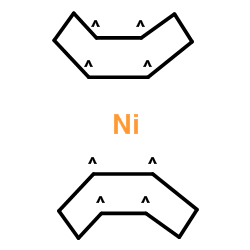


![Nickel, [carbonato(2-)-κO]- structure](https://image.chemsrc.com/caspic/324/719261-06-0.png)


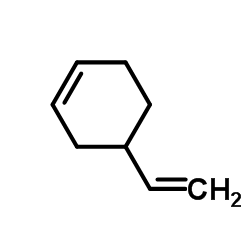




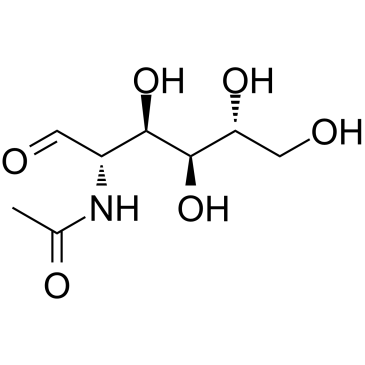 CAS#:3615-17-6
CAS#:3615-17-6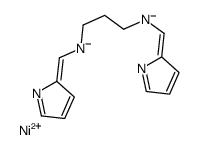 CAS#:15158-90-4
CAS#:15158-90-4![Nickel,bis[2-[(phenylimino-kN)methyl]phenolato-kO]- (9CI) structure](https://image.chemsrc.com/caspic/224/14266-60-5.png) CAS#:14266-60-5
CAS#:14266-60-5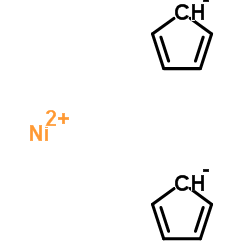 CAS#:1271-28-9
CAS#:1271-28-9 CAS#:97-61-0
CAS#:97-61-0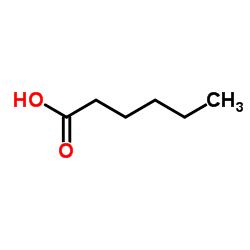 CAS#:142-62-1
CAS#:142-62-1 CAS#:3264-82-2
CAS#:3264-82-2 CAS#:541-59-3
CAS#:541-59-3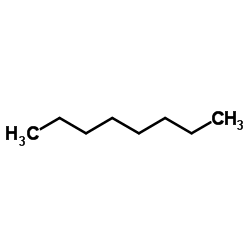 CAS#:111-65-9
CAS#:111-65-9 CAS#:1313-99-1
CAS#:1313-99-1